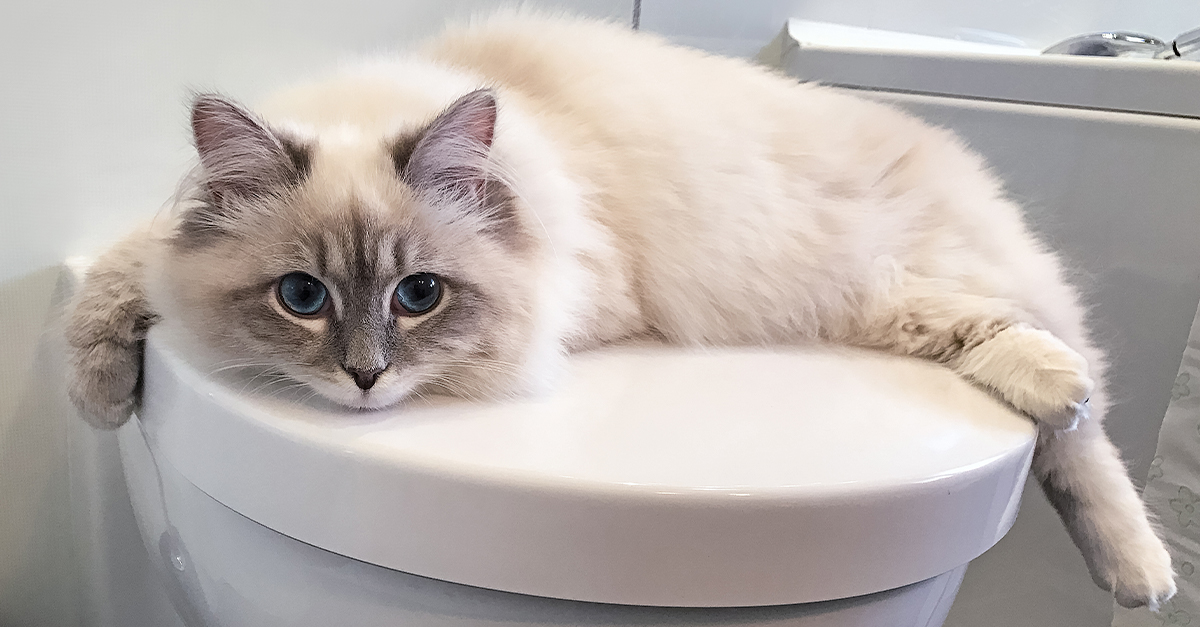Why You Have to Never Get rid of Animal Waste Down the Toilet
Why You Have to Never Get rid of Animal Waste Down the Toilet
Blog Article
What're your beliefs about Should you flush animal waste down the toilet?

When it pertains to throwing away waste, specifically animal waste, many individuals commonly turn to the practical choice of flushing it down the toilet. However, this apparently very easy option can have significant repercussions for the environment and public health. In this article, we'll discover why flushing pet waste down the commode is a negative idea and supply alternative approaches for proper disposal.
Introduction
Proper garbage disposal is vital for keeping environmental sustainability and public health. While it may seem safe to flush animal waste down the commode, it can lead to different concerns, both for the setting and human well-being.
Dangers of flushing pet waste
Environmental effect
Flushing animal waste introduces unsafe microorganisms and pathogens into rivers, which can adversely impact marine ecosystems. These pathogens can infect water sources and damage aquatic life, interrupting delicate ecosystems.
Public health worries
Pet waste consists of unsafe germs such as E. coli and Salmonella, which can present severe wellness dangers to people. Flushing animal waste down the toilet can contaminate water supplies, resulting in the spread of diseases and infections.
Alternatives to flushing
Instead of purging animal waste down the commode, there are numerous alternate disposal methods that are more eco-friendly and hygienic.
Composting
Composting animal waste is an environment-friendly way to dispose of it. By composting, raw material is broken down into nutrient-rich dirt, which can be utilized to feed gardens and plants.
Landfill disposal
Taking care of animal waste in a land fill is an additional option. While not as eco-friendly as composting, it is a safer option to flushing, as it protects against the contamination of water sources.
Pet dog waste disposal systems
There are specific pet dog waste disposal systems offered that securely and hygienically deal with pet waste. These systems often use enzymes to break down waste and eliminate smells.
Actions to correct animal waste disposal
To guarantee proper disposal of pet waste, comply with these steps:
Scooping and getting waste
On a regular basis scoop and bag animal waste utilizing biodegradable bags. This stops waste from polluting the setting.
Making use of designated waste bins
Dispose of bagged animal waste in marked waste containers, such as garden compost containers or garbage dump containers. Stay clear of flushing it down the commode in all expenses.
Cleaning up litter boxes and pet dog locations consistently
Consistently clean litter boxes and animal areas to avoid the buildup of waste and microorganisms. Use pet-safe cleansing products to maintain health.
Benefits of appropriate disposal methods
Taking on appropriate disposal approaches for animal waste supplies several advantages:
Lowered environmental pollution
Appropriate disposal approaches reduce the danger of environmental pollution, protecting waterways and ecosystems from contamination
Lessened threat of water contamination.
By avoiding flushing animal waste down the bathroom, the danger of water contamination is website substantially lowered, guarding public health.
Improved sanitation and health
Appropriate disposal techniques promote better sanitation and health, developing a much safer atmosphere for both humans and animals.
Conclusion
In conclusion, flushing pet waste down the commode is unsafe to the setting and public health. By taking on alternative disposal approaches and following appropriate waste management practices, we can reduce the adverse effect of pet waste and contribute to a cleaner, much healthier world.
What To Do With Dog Poo – The Do's And Don'ts Of Disposing Of Faeces
Dog poo bins
Some councils provide dedicated dog waste bins in popular dog-walking areas that can take dog poo that has been bagged but you can legally dispose of dog waste in any public litter bin, as long as it is securely bagged. This also applies to your wheelie bin at home.
Do not flush
Water companies do not recommend flushing dog faeces down the toilet because certain parasites can survive the water processing treatment and are potentially harmful to humans. You should also never consider flushing dog poo that has been bagged down the toilet as the bags will not break down and instead create severe blockages in the sewage system.
In the woods
The Forestry Commission promotes a ‘stick and flick’ method for dealing with waste in the woods. This means finding a stick and using it to flick any poo from off the path so that it is out of the way of other walkers. You could also bury it as long as it is not in an area where there might be livestock.
Livestock
Parasites found in dog poo can be transmitted to livestock if they inadvertently eat infected faeces that has been left on grazing land. This could result in the death of sheep or abortion in cattle so you should always make sure you pick up your dog’s waste in fields where livestock could be present.

Consistently clean litter boxes and animal areas to avoid the buildup of waste and microorganisms. Use pet-safe cleansing products to maintain health.
Benefits of appropriate disposal methods
Taking on appropriate disposal approaches for animal waste supplies several advantages:
Lowered environmental pollution
Appropriate disposal approaches reduce the danger of environmental pollution, protecting waterways and ecosystems from contamination
Lessened threat of water contamination.
By avoiding flushing animal waste down the bathroom, the danger of water contamination is website substantially lowered, guarding public health.
Improved sanitation and health
Appropriate disposal techniques promote better sanitation and health, developing a much safer atmosphere for both humans and animals.
Conclusion
In conclusion, flushing pet waste down the commode is unsafe to the setting and public health. By taking on alternative disposal approaches and following appropriate waste management practices, we can reduce the adverse effect of pet waste and contribute to a cleaner, much healthier world.
What To Do With Dog Poo – The Do's And Don'ts Of Disposing Of Faeces
Dog poo bins
Some councils provide dedicated dog waste bins in popular dog-walking areas that can take dog poo that has been bagged but you can legally dispose of dog waste in any public litter bin, as long as it is securely bagged. This also applies to your wheelie bin at home.
Do not flush
Water companies do not recommend flushing dog faeces down the toilet because certain parasites can survive the water processing treatment and are potentially harmful to humans. You should also never consider flushing dog poo that has been bagged down the toilet as the bags will not break down and instead create severe blockages in the sewage system.
In the woods
The Forestry Commission promotes a ‘stick and flick’ method for dealing with waste in the woods. This means finding a stick and using it to flick any poo from off the path so that it is out of the way of other walkers. You could also bury it as long as it is not in an area where there might be livestock.
Livestock
Parasites found in dog poo can be transmitted to livestock if they inadvertently eat infected faeces that has been left on grazing land. This could result in the death of sheep or abortion in cattle so you should always make sure you pick up your dog’s waste in fields where livestock could be present.

I stumbled upon that content on Should you flush animal waste down the toilet when surfing the web. Be sure to take the time to distribute this entry if you liked it. Thank-you for your time spent reading it.
Click Here Report this page